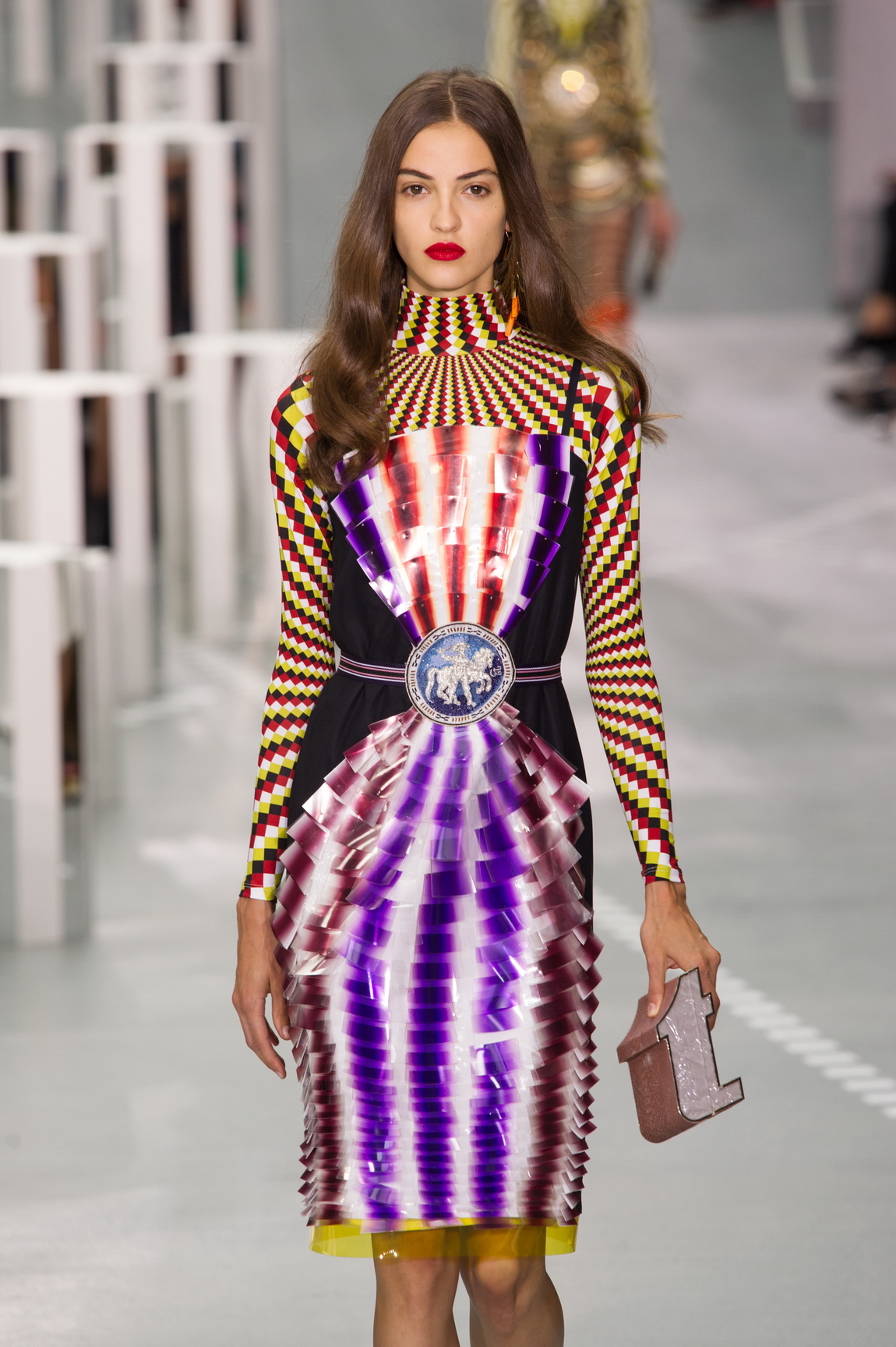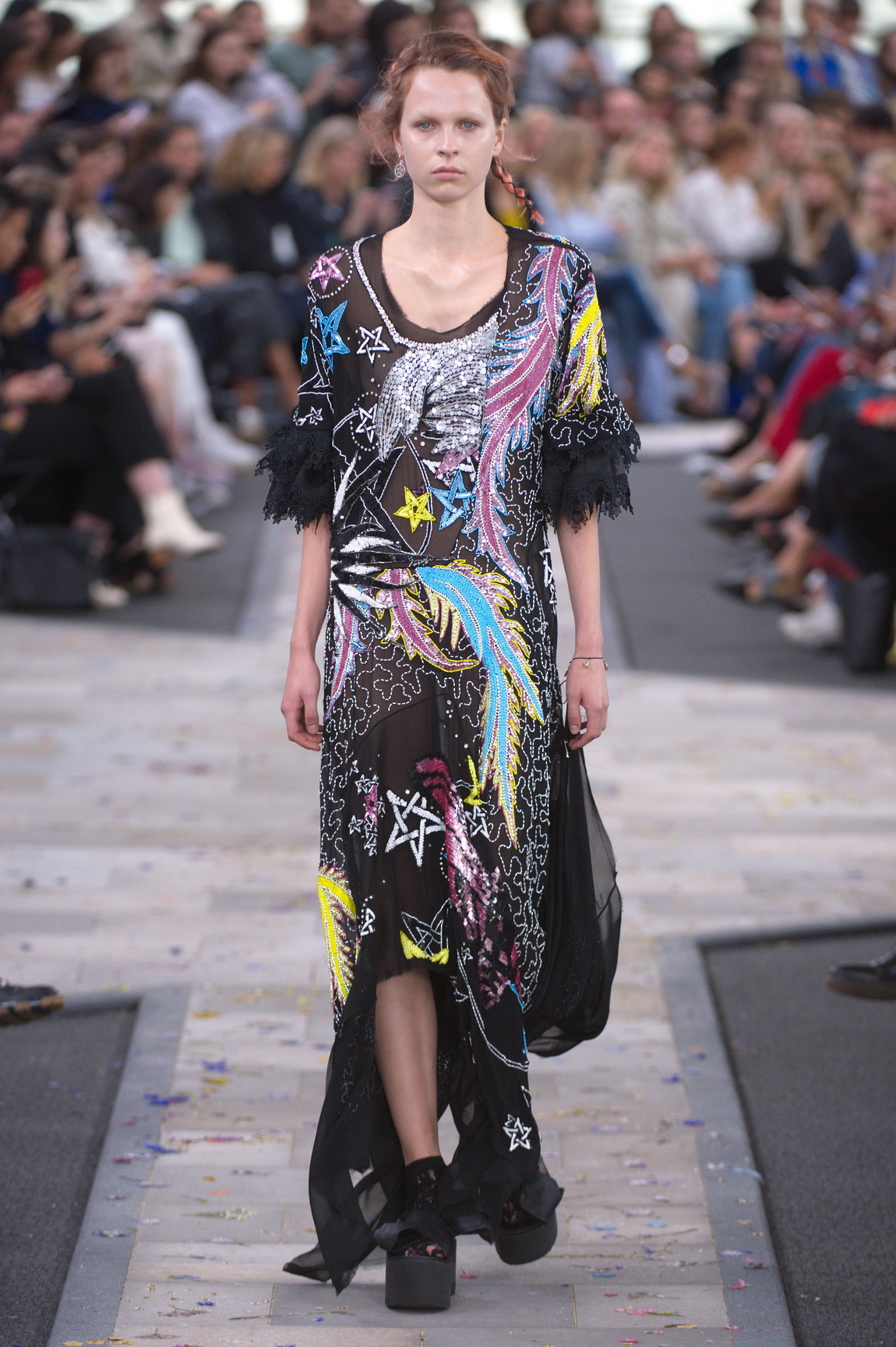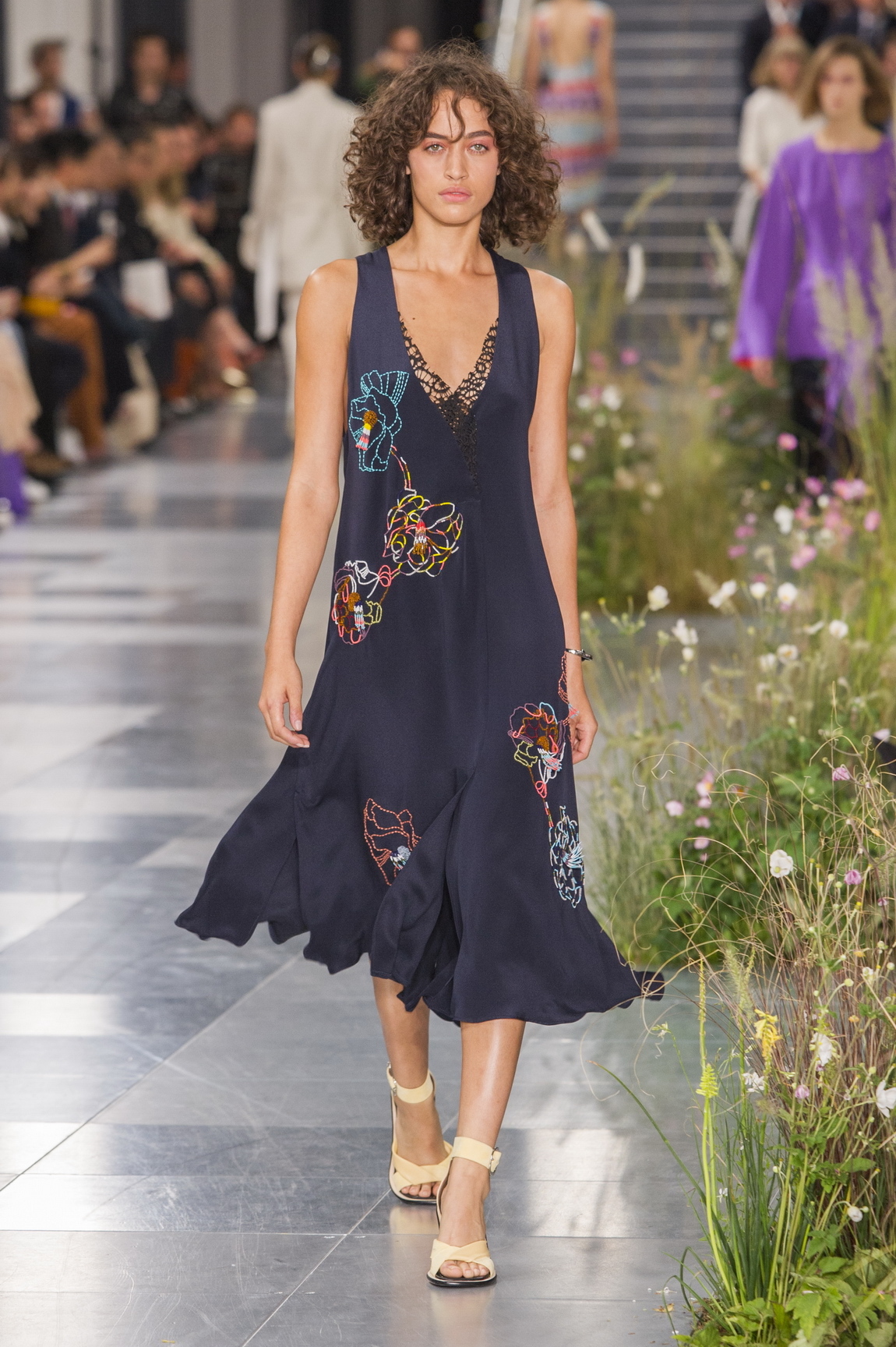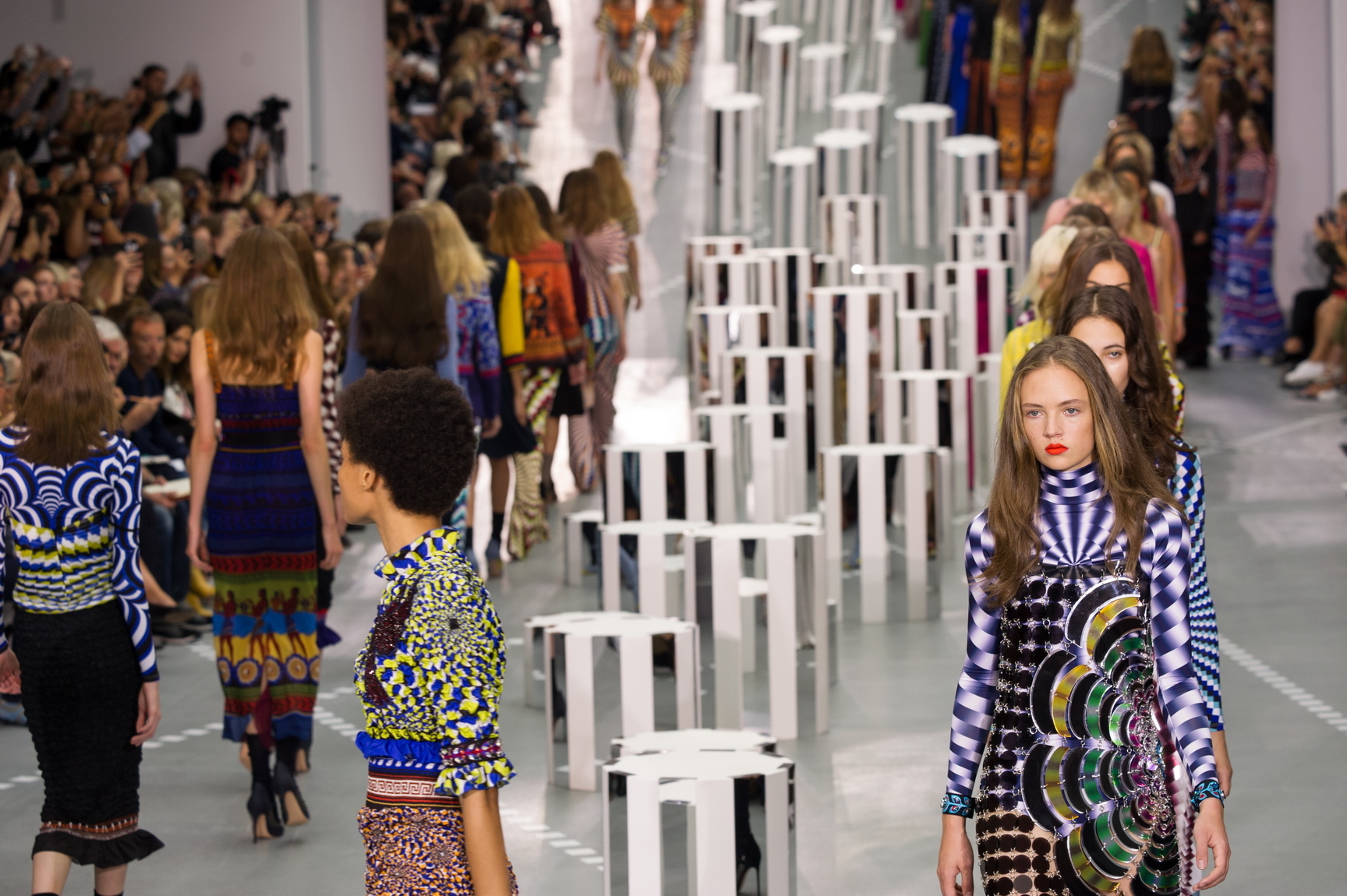It’s sometimes hard to believe that only seasons ago fashion was putting the mundane on a pedestal: the minimal, the muted, the normal — the normcore! On a fashion week Sunday in London where womenswear seemed all about elevating women to a certain status of superpower — from empresses to witches and everything in between — in retrospect, the disempowering and individuality-crushing idea of normcore couldn’t be sillier. With the city’s United Nations of designers, the London shows are always like a trip around the world, and the most amazing thing is when our multinational designers root a similar idea in their individual cultures. This season it was about the highest, most powerful and beautiful form of femininity. For Mary Katrantzou, representing the Hellenes, that could only be the Greek goddesses she grew up with. They appeared in motifs on dresses that got more and more colored and patterned like the ancient art of Katrantzou’s homeland, until they reached a totally trippy, almost hypnotizing high, some embellished to the point that you could literally hear the craftsmanship rustle as it walked past you. It was sensory overload the spellbinding way, and Katrantzou wasn’t chanting solo in her magic circle.

At Preen, eternal teenagers Justin Thornton and Thea Bregazzi lured guests into a cult — the occult — with a ravishing collection conjured up in the underworld of witchcraft. “Creepy girls are the cutest,” Thornton quipped backstage, citing “pastel goths from Tokyo,” who, as he explained, “only wear pastel, but they’re black on the inside — that’s what they believe.” There was a gothy teenage gloom to the collection in the contrasting way that kind of gloom manifests itself, sort of like an exhilarating inner battle between the optimism of youth and the willingness for melancholy. “If it were all black it would have looked super goth, but we wanted a magical feel with all the sequins,” Thornton said, referring to the wealth of color and embellishment that electrified the garments. “We looked at how society is a little bit broken down, and we’re lulled into this fall sense of security that we’re living in this perfect society.” Like Katrantzou’s proposal, this was a spellbinding femininity — the kind so powerful it used to get women burned alive. At Preen, the witches of the world had the last screeching laugh. Not ones to miss an embellishment party, Peter Pilotto and Christopher de Vos joined the fun with an adorably adorned collection inspired by South American motifs, a nod to de Vos’ Peruvian genes.

Dresses were decorated with animated patches — a fashion thing so strong post-Alessandro Michele’s Gucci you might use the word trend about it — of animals with a mythical feel to them. Some looked like kangaroos, that most eccentric of fabulous creatures, and the magic box was ticked once again. For David Koma, magic was just around the corner — quite literally — growing up in Saint Petersburg minutes away from the Winter Palace with its otherworldly opulence. Based on the 19th-century wardrobe of the Romanovs, Koma’s collection marked his first foray into historical reference beyond the modernism that fills his thoughts, and it paid off big time. As it turns out, fashion’s prince of skimpy, skin-tight sexiness knows his way around a Victorian boudoir as well — and he merged the two with seamless balance, bedazzling hussar-looped party garments with his trademark geometric bling, giving it up for the fantasy of female power he grew up with in tales up the bejeweled tsarinas and all their might. Sir Paul Smith need only look to his ever-so chic wife, Lady Pauline Denyer, for that kind of inspiration. She was there for his show on Sunday evening, which continued the directional transformation of the Paul Smith brand.

Based on the “ritualistic use of floral garlands as a means of companionship,” the meadow-like set was pretty magical in itself, but rather than in witchcraft, Sir Paul’s elevated idea of female power was rooted in the enchanting forces of nature — flower power, if you will. Like everywhere on London’s Sunday schedule, it was craftsmanship at full throttle, chez Smith with all the floral crayon prints and embroidery a girl could wish for, applied to the decidedly handsome silhouette of Sir Paul’s masculine scissors. His was the British interpretation of female superpower, which could only ever lead back to the uniforms and tailoring the craftsmen of this nation master better than anyone. Just ask Johnny Coca, a Spaniard in London faced with the heritage of these British lands. In his second collection for Mulberry, he tackled those uniforms — the school kind, the military kind — with the breezy West London attitude of the brand he’s got down to a T. The last segment of the show transitioned into another British institution, the flouncy Victorian dress, recently perverted so brilliantly by Vetements in that oversized floral number everyone and their mom now owns. Coca’s interpretation reined the British classic back in to Britain, simplifying it for the cool but classic Mulberry woman, and blinging it up to sparkly new heights.

Credits
Text Anders Christian Madsen
